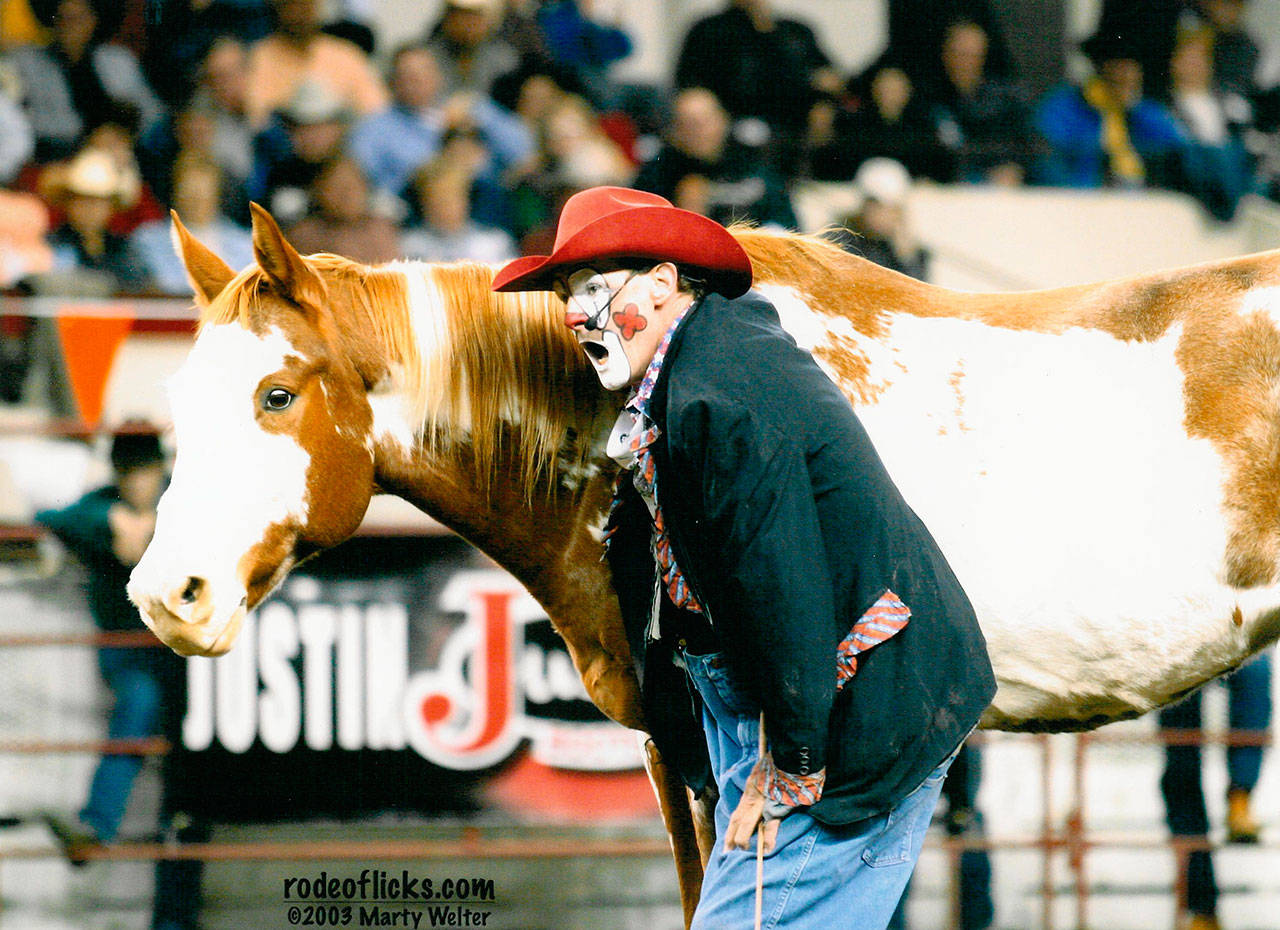As the song says, “Mammas, don’t let your babies grow up to be cowboys.”
But it didn’t say anything about becoming a rodeo clown.
And that’s lucky for Keith Isley, because that’s just what he did.
Isley, 59, who travels with the Professional Rodeo Cowboys Association, (PRCA) and performs during rodeos, once thought he’d be that rodeo cowboy.
“I grew up on a farm and we always had horses,” said Isley, who hails from Goldstone, North Carolina. “My older brother went into the military and got exposed to rodeo. Then, he kinda got me and another brother into it.”
At 14, Isley began riding bulls in the junior rodeo division.
“But I soon found out that it was more fun to fight the bull from the ground,” he said. “So then I want to be a bullfighter.”
As time went on, however, he found that being a rodeo clown could combine the on-the-ground bullfighting with the comedy and humor that he loved.
“In the mid 1990s, I quit fighting bulls to concentrate on the humor,” he said.
Although he describes himself as shy, he found that the baggy pants and the makeup gave him just enough of a comfort shield from the spectators.
He used to travel with the rodeo from March to October every year, but the past few years he’s cut that to mid-June through mid-October.
“I’m slowing down a bit to spend more time with my family,” he said.
Currently, he’s on a rodeo circuit from Colorado to Washington state where he will arrive in time for the Kitsap County Fair & Stampede. He travels with his three horses, his dogs, and sometimes his wife. He and his wife use to travel together doing a trick horse riding act.
“My wife barrel raced and she got me into the trick riding,” he said. “That trick riding got me to where I am today.”
For his performances, Isley is up at 7 a.m. taking care of his horses.
“They get a bath every single day,” he said. “And then about an hour before I go on, I get in my trailer and start putting on my makeup and my baggy pants.”
If necessary, he can get ready in 10 minutes. But he likes to have an hour so he can become the clown persona. He doesn’t have a clown name, but he always wears some combination of red, white and blue and his red suspenders.
“A lot of clowns wear wigs,” he said. “But I found that my lack of hair is more funny.”
Once he’s in the stadium, he’s busy performing stunts to entertain the crowd including trick roping, high and low impact aerobics, animal tricks and trick riding.
“Many people think the clown’s only job is to keep the attention of the bull after the cowboy is thrown,” he said. “And that’s the tradition. But I also entertain during the breaks between events.”
His acts include working with animals, which is never easy, he said.
“Animals will teach you to improvise,” he said. “You never really know what they’re going to do.”
He also knows that the hardest part of his work is losing an animal.
“It’d be nice if they lived forever,” he said. “But they don’t. It’s tough to lose them. They’re like family.”
In his work, he also uses a large barrel, which he can hop into to get out of the way of the bull, when needed.
“The crowd does like to see the bull hit the barrel with the clown in it,” he said. “I’ve come close to getting knocked out of it. But the announcer will let me know when and if I can stick my head up.”
Other than small injuries and a semi-serious neck injury, Isley has been flawless in his more than 20 years as a rodeo clown and barrelman.
He likes to interact with the crowd and sometimes is able to “get up with the spectators and get them involved in the rodeo.”
Isley does his own bookings and makes his own travel plans. He also likes to work a few weeks around his hometown every year.
“I try not to forget where I came from,” he said.
He and his wife don’t have children, but he has two brothers in North Carolina and when he’s away he misses “that town 300 people and no stoplights.”
Isley has won many honors including the PRCA Comedy Act of the Year in 2013, and the PRCA Clown of the Year at least six times. He’s also won awards from Coors-Molson which sponsors the “Man in the Can” barrel performances at many rodeos.
Isley is quick to say that his favorite part of the rodeo world is the audience.
“The response and the applause from the people, that’s pretty rewarding.”
DID YOU KNOW:
Rodeo clowns date to the beginnings of competitive rodeo in the early 1900s, when promoters hired cowboys to entertain the crowd between events or if the competition was delayed. These individuals began wearing oversized, baggy clothing and eventually developed more outlandish gear.
When bull riding competition began to use ill-tempered Brahma bulls in the 1920s, the need for a person to distract the bull from fallen riders fell to the rodeo clown. The use of a barrel for protection began during the 1930s when a rodeo clown named Jasbo Fulkerson began to use a wooden barrel with a solid bottom.



